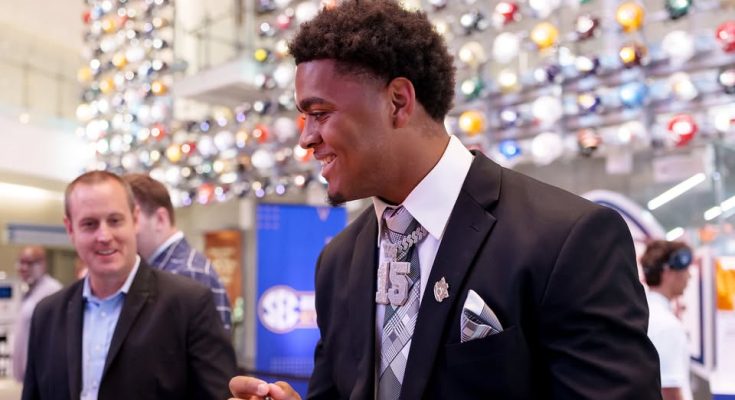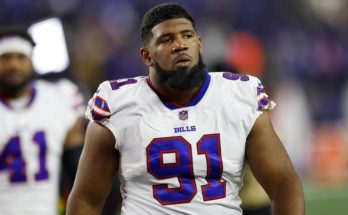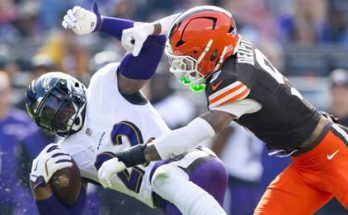Auburn football has long held a distinct place in the Southeastern Conference, a storied program that boasts a lineage of powerhouse players, SEC championships, and national title contention. But entering this new era of Tigers football, there seems to be an emerging narrative of resilience, depth, and top-end talent ready to rise. That narrative gained credibility and momentum when six Auburn Tigers were named to the prestigious Preseason All-SEC Team—a resounding acknowledgment of the team’s growing strength, balance, and upward trajectory under head coach Hugh Freeze. Among the six, standout edge rusher Keldric Faulk and dynamic receiver/cornerback duo Caleb Coleman have not only emerged as household names on The Plains, but as anchors of what could be a nationally competitive Auburn squad in 2025.
For Auburn, this development is more than a symbolic pat on the back. Being represented across multiple units in the preseason team is indicative of how the Tigers are quietly building something formidable. Faulk and Coleman are particularly significant figures because they reflect both the recruiting success and the player development underway at Auburn. Faulk, a former five-star defensive end, and Coleman, a versatile talent who has thrived in multiple roles, embody a cultural shift. They’re no longer merely talented prospects—they’re leaders and SEC-certified stars.
Faulk’s selection as a First-Team Preseason All-SEC defender signals that Auburn’s pass rush will be feared across the league. Standing at 6-foot-6 and tipping the scale near 270 pounds, Faulk has the prototypical build of an NFL edge rusher. But it’s not just about measurables. His football IQ, relentless motor, and ever-expanding pass-rush arsenal make him a player who must be schemed against. Last season, Faulk led Auburn with 9.5 sacks and 14 tackles for loss. Those stats didn’t come by accident—they were earned against SEC-caliber offensive lines. But perhaps more importantly, Faulk elevated his game during key moments. His two-sack performance against Alabama in the Iron Bowl was a high-water mark that left even the most critical analysts praising his ability to dominate when the stakes were highest.
Coleman’s inclusion is equally revealing. Unlike Faulk, who had the recruiting pedigree and physical profile from the jump, Coleman was somewhat under the radar in his early Auburn days. Originally recruited as a wide receiver, he showed flashes of brilliance during his freshman year. However, it was the coaching staff’s decision to move him into a hybrid defensive back role that unlocked his full potential. What followed was a breakout sophomore campaign that saw him notch 4 interceptions, 11 pass deflections, and even score two defensive touchdowns. His versatility—covering slot receivers, dropping into deep zone, or blitzing off the edge—makes him a chess piece in Auburn’s defensive scheme. He’s now projected by multiple draft analysts as a Day 2 NFL pick and, depending on his 2025 campaign, he could ascend even higher.
The elevation of both Faulk and Coleman speaks to Auburn’s deeper roster health. The Tigers didn’t just sneak a couple of names onto the list—they had six players selected across multiple positions. This includes veterans like center Avery Jones, who will anchor an offensive line that has long been Auburn’s Achilles heel but now appears vastly improved. Jones, a North Carolina transfer who acclimated quickly to SEC speed, is a technician at the center position. His leadership is crucial in managing pre-snap reads and giving Auburn’s young quarterbacks the confidence they need to grow. If the offensive line shows stability, then the offense can function at a higher, more efficient level—a must for competing in the modern SEC.
Another name on the Preseason All-SEC list is running back Jarquez Hunter. With the departure of Tank Bigsby to the NFL, many questioned whether Hunter could handle the RB1 load. He answered those doubts with ferocity, recording over 1,100 yards from scrimmage and 12 total touchdowns last season. Hunter is a downhill runner with surprising burst and vision, and he’s also added receiving skills to his toolkit. That dual-threat ability puts extra pressure on SEC linebackers and defensive coordinators alike. With Hunter in the backfield, defenses can’t key in on any one aspect of Auburn’s offensive scheme.
The final two players rounding out Auburn’s All-SEC selections were defensive tackle Marcus Harris and cornerback D.J. James. Harris is the classic example of a lineman who might not always show up on the stat sheet but whose presence changes the game. His gap integrity, strength at the point of attack, and ability to collapse pockets from the interior are crucial in freeing up edge rushers like Faulk to make plays. He’s the definition of a blue-collar defensive tackle—unheralded but indispensable. D.J. James, on the other hand, is the lockdown corner every team wishes they had. His fluid hips, anticipation, and ball skills make him a true No. 1 corner in a league that features some of the best receiving talent in college football. With Coleman and James anchoring the secondary, Auburn’s pass defense could emerge as one of the conference’s best.
These six selections are not just recognition—they’re a warning to the rest of the SEC. Auburn is assembling something more cohesive and complete than in years past. What was once a team struggling with inconsistency and identity crisis post-Gus Malzahn now seems to be finding its footing under Freeze. Recruiting has improved, especially in the trenches and skill positions. The development pipeline is active, with younger players like Coleman and Faulk blossoming under pressure. And veteran leadership—players like Avery Jones and Marcus Harris—provides the kind of locker room stability that championship teams often rely on.
Moreover, Auburn’s representation on the Preseason All-SEC Team highlights a changing tide in the program’s internal culture. These aren’t players who are simply accumulating stats; they’re thriving in a system that’s beginning to prioritize discipline, intelligence, and adaptability. Faulk isn’t just a pass rusher—he’s now becoming a vocal leader in the locker room, mentoring incoming freshmen and setting the tone at practices. Coleman has taken to film study and positional flexibility in a way that suggests a deep understanding of the game far beyond his years. These are the signs of a team that’s not just hoping to win—but is preparing to win.
This development is timely because the SEC itself is entering a transitional phase. With the arrival of Texas and Oklahoma, and the emergence of teams like LSU, Ole Miss, and Missouri as legitimate threats, there’s more volatility at the top than in previous seasons. Alabama is no longer a guaranteed juggernaut, Georgia is reloading, and Florida continues to search for a consistent identity. This creates a vacuum—a rare opening in which a well-prepared, hungry team like Auburn can break through the logjam and reassert itself as a perennial contender.
Faulk’s continued development as an elite edge rusher could be the single most important factor in Auburn’s success. In the SEC, where games are often decided by a handful of key third-down stops, having a player who can wreck a play from the edge is an irreplaceable asset. And for Faulk, the next step involves refining his pass-rushing technique. His bull-rush is already effective, but his bend around the edge and counter moves are where the greats separate from the good. If he takes that next step, Auburn will have a player in the mold of Will Anderson Jr. or Myles Garrett—a true game-changer.
Similarly, Coleman’s continued growth in the secondary could transform Auburn’s defensive strategy. His ability to play multiple positions allows the Tigers to disguise coverages, bait quarterbacks into mistakes, and shut down entire halves of the field. In an SEC where quarterbacks are increasingly mobile and schematically sophisticated, this type of defensive flexibility is critical. Combine that with the interior pressure from Harris and the lockdown coverage of D.J. James, and suddenly Auburn’s defense looks like one capable of dominating in all three levels.
Offensively, the selections of Hunter and Jones point to a more balanced attack. For years, Auburn’s offensive identity has vacillated between power running and spread concepts, often lacking cohesion. But with Jones solidifying the line and Hunter providing a reliable bell cow, Freeze can install a more versatile offense. Whether it’s run-pass options, play-action deep shots, or tempo-based drives, Auburn has the pieces in place to adapt their game plan to the weaknesses of their opponent.
Looking ahead, the Preseason All-SEC selections may serve as a turning point—a moment where outside analysts began taking Auburn’s resurgence seriously. But within the locker room, the mentality is different. These players are not interested in preseason accolades; they’re chasing wins, championships, and a return to national relevance. That’s the real story. The All-SEC honors are merely validation of what’s brewing behind the scenes.
Faulk, Coleman, and the rest of the six Tigers honored this preseason are not only individual talents to be celebrated—they’re symbols of what Auburn football is becoming. They represent a culture of accountability, growth, and competitive excellence. They are the foundation of a team that’s poised to re-enter the elite tier of college football not just in 2025, but for years to come.
For Auburn fans, these preseason honors are both a reward and a reminder. A reward for standing by a program through turbulent seasons. And a reminder that the Tigers are not far from being truly great again. If these six players live up to expectations—and if the younger roster continues to mature—the rest of the SEC will have to contend with a resurgent force. Auburn is no longer the sleeping giant. They’re awake, they’re armed with elite talent, and they’re ready to roar.



